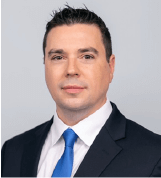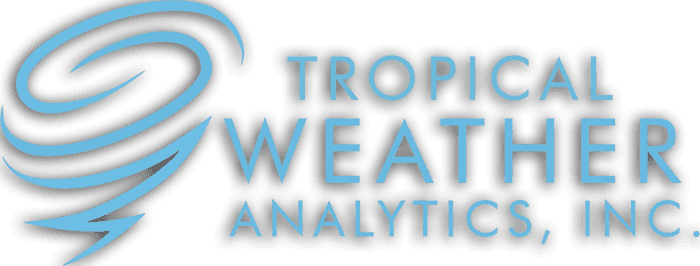Our Mission
TWAi’s mission is to save lives and mitigate damage from hurricanes and other climate-related events by improving global forecasting technologies through 4D polar wind data and providing earlier, 2X more accurate hurricane forecasts. The data collected by our Hurricane Hunter NanoSat constellation will be leveraged into a suite of powerful weather apps that will help businesses and governments predict, plan, and profit from weather.
Tropical Weather Analytics, Inc. is the commercial spinoff of Visidyne, Inc. We have been awarded over $108 million dollars in direct contracts by NASA, DoD, and commercial satellite companies to develop our unique, proprietary measuring technique.

Articles About Our Mission
Our Team

A.T. Stair
Chief Executive Officer
Chief Scientist of the Air Force Geophysics Laboratory (retired), Program Manager and PI with overall responsibility on multiple satellite Programs; 1) Cirrus 1, the first DOD payload on the Space Shuttle, STS 4, took one year 2) Cirrus 1A, the first cryogenic infrared sensor on the Space Shuttle and the Midcourse Space Experiment (MSX), prime contractor was APL/JHU. 4) Chief Scientist of the Russian American Observation Satellites Program (RAMOS), prime contractor was SDL/USU.

Ilya Schiller
President
Ilya Schiller has an established track record for building businesses and creating products in high tech industry. Mr. Schiller has a deep understanding of product life cycle, business and customer interaction and importance of building a strong team. Ilya Schiller co-founded Digital Ink, Inc. that developed electronic pen system for communication using handwritten notes. He served as CEO, spearheading the company’s business and technology development efforts and raised $5.5M in two stages of venture capital funds. Prior to Digital Ink, Mr. Schiller was vice president in charge of advanced projects at KTAADN, Inc., which achieved 400 percent growth during his tenure.

Daniel Harkins
COO
Has held senior level positions as Marketing Manager or Sales Manager for the past 20+ years across several industries including: satellite, digital manufacturing, life sciences and biophysics instrumentation. Co-inventor and author of the first instrument to measure gene expression in intact tissue, Daniel has helped bring over 10 products to market that have generated over $300 million in sales through comprehensive digital, direct and go-to-market strategies.

Andrew LePage
Chief Scientist
From 2014 to 2019, Mr. LePage was the lead scientist responsible for the acquisition and analysis of orbital imagery for the assessment of stereographic techniques to determine the altitudes of clouds as part of the CASIS-sponsored CyMISS (Tropical Cyclone Intensity Measurements from the ISS) project. CyMISS is part of a larger effort to develop a new and more accurate remote sensing technique to determine the intensities of powerful tropical cyclones based on the Carnot engine model. Mr. LePage worked with NASA support staff and the crew the ISS to acquire photography of over 80 tropical cyclones needed for this project and received the 2017 Innovation in Earth Science and Remote Sensing Award for this work from CASIS which manages the ISS US National Laboratory for NASA.

Robert J. Jordano (Jay)
Senior Project Scientist
Mr. Jordano is a physicist specializing in modeling atmospheric effects, including nuclear detonation disturbed atmospheres, RF and optical propagation through the atmosphere, sensor processing algorithms to detect targets in the presence of cloud clutter, and modeling of tropical cyclones. He is a principal developer of several atmospheric nuclear effects legacy computer programs for the Defense Threat Reduction Agency (1970 – present). He led the modeling and simulation activities and development of the experiment plan for the Missile Defense Agency RAMOS (Russian-American Observation Satellites) Program (1992-2004). He led the ACES (Advanced Concept Exploitation for Surveillance) program for the Air Force Research Laboratory (2006-2011).

John DeVore
Senior Project Scientist
John holds a BS in Physics (Caltech) followed by a PhD in Atmospheric Science (UCLA). Over his career he has worked on a variety of computer codes such as for modeling the transmission of radiation through the atmosphere, analyzing particle properties from cloud solar and stellar aureole profile measurements, and analyzing properties of dust particles associated with exoplanets. Recently his research has expanded to include working with data from the U.S. GOES and Japanese Himawari meteorological satellites related to tropical cyclones as well as other earth remote sensing projects.

Rimantas P. (Paul) Pauliukonis
Senior Scientist
Over 30 years experience in the field of Orbital Mechanics., Paul’s work on MSX and RAMOS projects included conjunction prediction, multi-satellite constellation modeling and viewing geometry analysis including satellite-missile interactions. Last assignment was monitoring all oceans for Tropical Cyclone (TC) activity during all the twelve months of the year. Upon TC detection, he would issue an observation request from the International Space Station (ISS) to Marshall Space Flight Center, Huntsville, Alabama. He received BS in Physics degree from the College of the Holy Cross in Worcester, MA.
SCIENTIFIC ADVISORY BOARD

Kerry Emanuel: Chairman
TWAI Science Advisory Board
Kerry is a Professor of Atmospheric Science at MIT (Massachusetts Institute of Technology) and is widely considered to be the world’s leading authority on the physics of hurricanes. Professor Emanuel’s research interests focus on tropical meteorology and global climate change. He Developed the accepted theory of the large-scale thermodynamics of hurricanes, demonstrating how these storms derive their energy from the thermal energy stored in the surface of tropical and subtropical oceans. Professor Kerry is Co-Founder and Co-Director of the Lorenz Center, an MIT think tank devoted to fundamental inquiry into the understanding and prediction of global climate change and was named one of the Time’s 100 influential people of 2006. In 2007, he was elected as a member of the U.S. National Academy of Sciences. Author or co-author of more than 200 papers in peer-reviewed publications. Selected recent papers:
On the predictability and error sources of tropical cyclone intensity forecasts.” Emanuel. K., and Zhang, F. 2016: J. Atmos. Sci., 73, 3739-3747
“Increased threat of tropical cyclones and coastal flooding to New York City during the anthropogenic era.” Reed, A. J., Emanuel, K.A., et al. 2015: Proc. Nat. Acad. Sci., 112, 12610-12615.
“Joint effects of storm surge and sea-level rise on US coasts: New economic estimates of impacts, adaptation, and benefits of mitigation policy.” Neumann, J. E., Emanuel, K., et al. 2014: Climate Change, 128, online.

Dr. Sai Ravela
Principal Scientist, MIT Department of Earth, Atmospheric, and Planetary Sciences
Designs methods to describe the behavior of Stochastic Fields and Processes. Studies Estimation, Control and Information theories, and topics in Statistical Pattern Recognition and Statistical Inference. Research suggests new algorithms to overcome the curses of nonlinearity, dimensionality and uncertainty, the key characteristics of Earth System problems. Unique contributions have been made to Mesoscale Data Assimilation, Storm Tracking and Quantifying Hurricane Risk.
Genesis of the Hurricane Hunter Satellites Project
Some time ago when tensions were rising between the USSR and the US, Dr. A.T. Stair and his company, Visidyne, were asked to undertake a collaborative project with the Russians to help ease international tensions.
Project RAMOS (Russian American Observation Satellites) called for each nation to use one of their satellites to produce pairs of earth images to generate stereo measurements of terrestrial features. MIT professors Paul Joss and Kerry Emanuel served as advisors. Prof. Emanuel had recently developed a physics model of how hurricanes are powered and Prof. Joss realized that stereo observations of hurricanes could be used to determine their strength.
In 2013, the Center for the Advancement of Science in Space, the US manager of the International Space Station (ISS), awarded the company a contract to use astronauts aboard the ISS to collect pairs of images as they passed over hurricanes. Company employees, Paul Pauliukonis, Andrew LePage, Jay Jordano, and John DeVore provided information on satellite orbits and picture timing, stereoscopic analysis of the imagery, and other assistance.
In 2017 they were awarded the Innovation in Earth Science and Remote Sensing Award for their work. As the idea of commercializing this work evolved, other members such as Prof. Velden, an expert on hurricane analysis from satellite imagery, were brought on board. And the Hurricane Hunter Satellites project was born.
Anaglyphic 3D mosaic (left eye red, right eye blue) of Typhoon Noru as seen from the ISS
Color mosaic of Tropical Cyclone Gita created using images acquired from the ISS
Sponsor A Spaceship
Sponsor A Spaceship
Advertise to 500 Million Viewers per Year!
Hurricanes are BIG news: 80 - 140 times per year, our 3D hurricane imagery will be featured across major news outlets.
What Makes Us So Valuable to Network TV?
- Earlier storm track and intensity
- 2X more accurate hurricane forecasts
- 3D imagery is visually compelling
- Accuracy = credibility & more viewers


